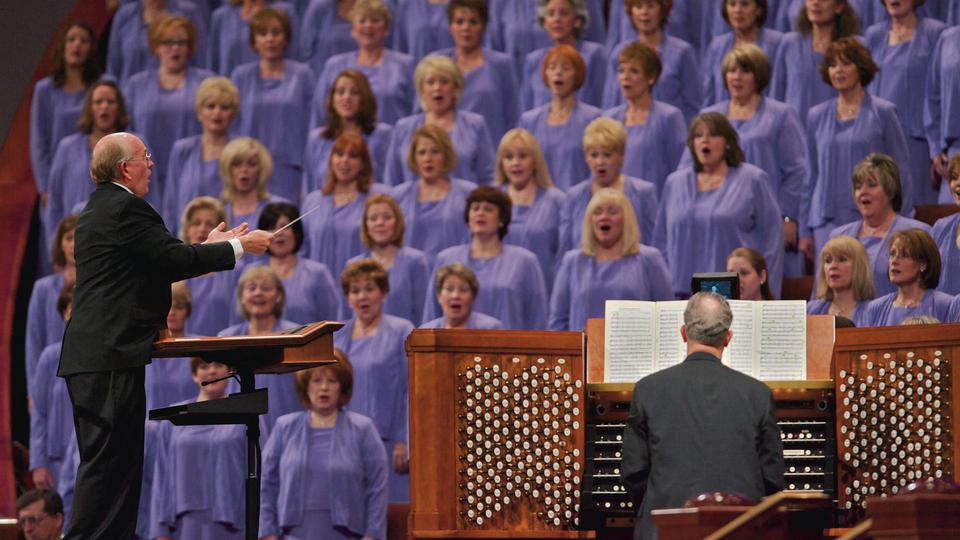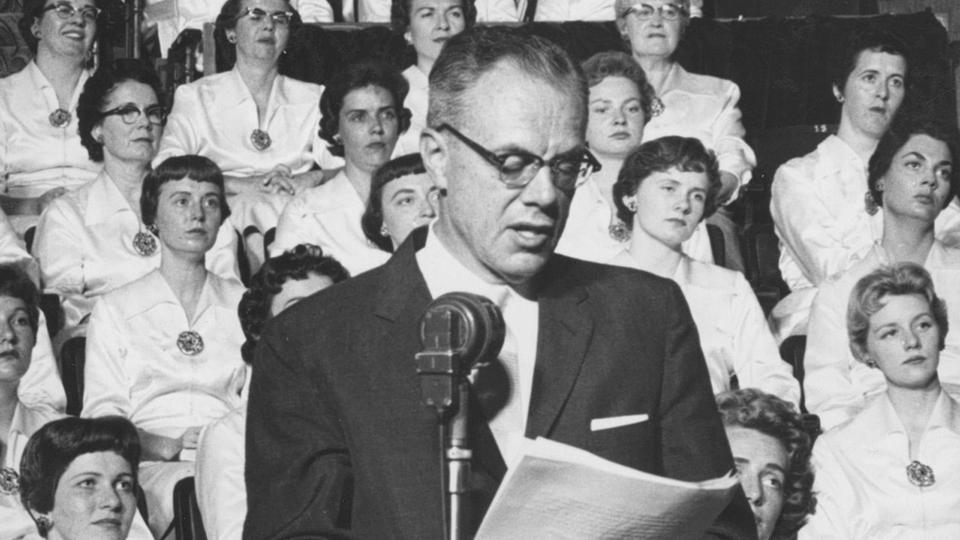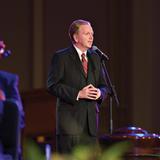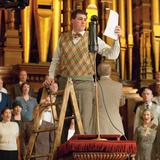Music and the Spoken Word , the longest running nationwide radio broadcast in the United States, will be inducted into the National Radio Hall of Fame Saturday, 6 November 2010. The live broadcast will air on KSL Radio at 102.7 FM and 1160 AM between 8:00 p.m. and 10:00 p.m. MDT. It will also be streamed at ksl.com.
The honor will be accepted by Mack Wilberg, conductor of the Mormon Tabernacle Choir.
“This is especially significant for us,” explains Wilberg, “not only because of the very talented individuals who were also nominated with us in the National-Pioneer category, but also because the selection was determined by a vote of the American listening public.” Wilberg will accept the honor on behalf of the choir from Bruce Reese, chairman and CEO of Bonneville International Corporation.
“Induction into the National Radio Hall of Fame represents a wide variety of programming formats,” explains Bruce DuMont, chair of NRHF and the associated Museum of Broadcast Communications. “Over the years there is no better example of the quality, the popularity and the longevity of our selection criteria than Music and the Spoken Word. The message and spirit they bring to their program is the epitome of what the Radio Hall of Fame is about.”
| Music director Mack Wilberg. 2010 Intellectual Reserve, Inc. All rights reserved | 1 / 6 |
The long-running broadcast on Salt Lake City radio station KSL began in 1929 with a telegraph message from the National Broadcasting Company in New York City. Within seconds, the message was relayed to the basement of the Tabernacle on Temple Square. A hand signal forwarded the message upstairs to the program director, and then on to 19-year-old Ted Kimball. Kimball, son of the choir organist, Edward P. Kimball, stood atop a 15-foot ladder to reach a microphone, and the show began. After a three-year stint at NBC, the program moved, in 1932, to a Sunday morning broadcast hour on CBS.
Several KSL radio announcers rotated through the choir assignment until, in 1930, Richard L. Evans received the permanent responsibility, a job he held until 1971. Evans began by simply announcing the hymns or musical selections, but soon added commentary to accompany the musical themes. The commentary expanded to incorporate the timely messages of hope and encouragement that became the “spoken word.”
“The broadcast is a representation of America’s own image,” explains J. Spencer Kinard, who assumed the narration responsibility following Evans’ passing in 1971. “It is a reflection of national moods, needs and aspirations. To many listeners, the weekly Music and the Spoken Word is like coming home.”
Lloyd Newell, the current announcer, who began his service in 1991, suggests the program “serves to inspire and motivate and yet not make you feel discouraged. The message comes from the heart.”
The weekly musical program, punctuated by the inspired “spoken word” message, reaches nearly 2,000 radio, television and cable stations in the United States and is broadcast internationally via BYU-TV and BYU-International. The original 1929 broadcast reached just 30 stations.
Technology has vastly improved since the initial broadcast with Kimball’s single microphone. With the help of native Utahn Dr. Harvey P. Fletcher, the broadcast added, in 1939, five microphones — one for the organ and four for each of the vocal sections.
Significant changes in technology occurred with the advent of television, according to Edward J. Payne, executive producer of the program since 1983. “We’ve added a number of camera positions so that we have a variety of shots and provide the back-up needed to produce a live show. This also improves the pacing of the show and makes it more interesting to watch. We now employ robotic cameras that enable one operator to run two cameras at the same time.”
Payne directs a staff of 25 people in each broadcast, but that production group depends on 18 additional people who assume responsibility for writing, copyrights, recording, editing and even translation. “It’s a focused effort to produce quality audio; we’re vigilant about making the sound and the 30-minute program better and better and better,” Payne explained.
The 30 minutes on air each week slide by quickly, but after 82 years and nearly 2,200 hours of air time, the broadcast continues with the message and promise Evans generated years ago: “In another seven days, Music and the Spoken Word will be heard again from the Crossroads of the West.”







